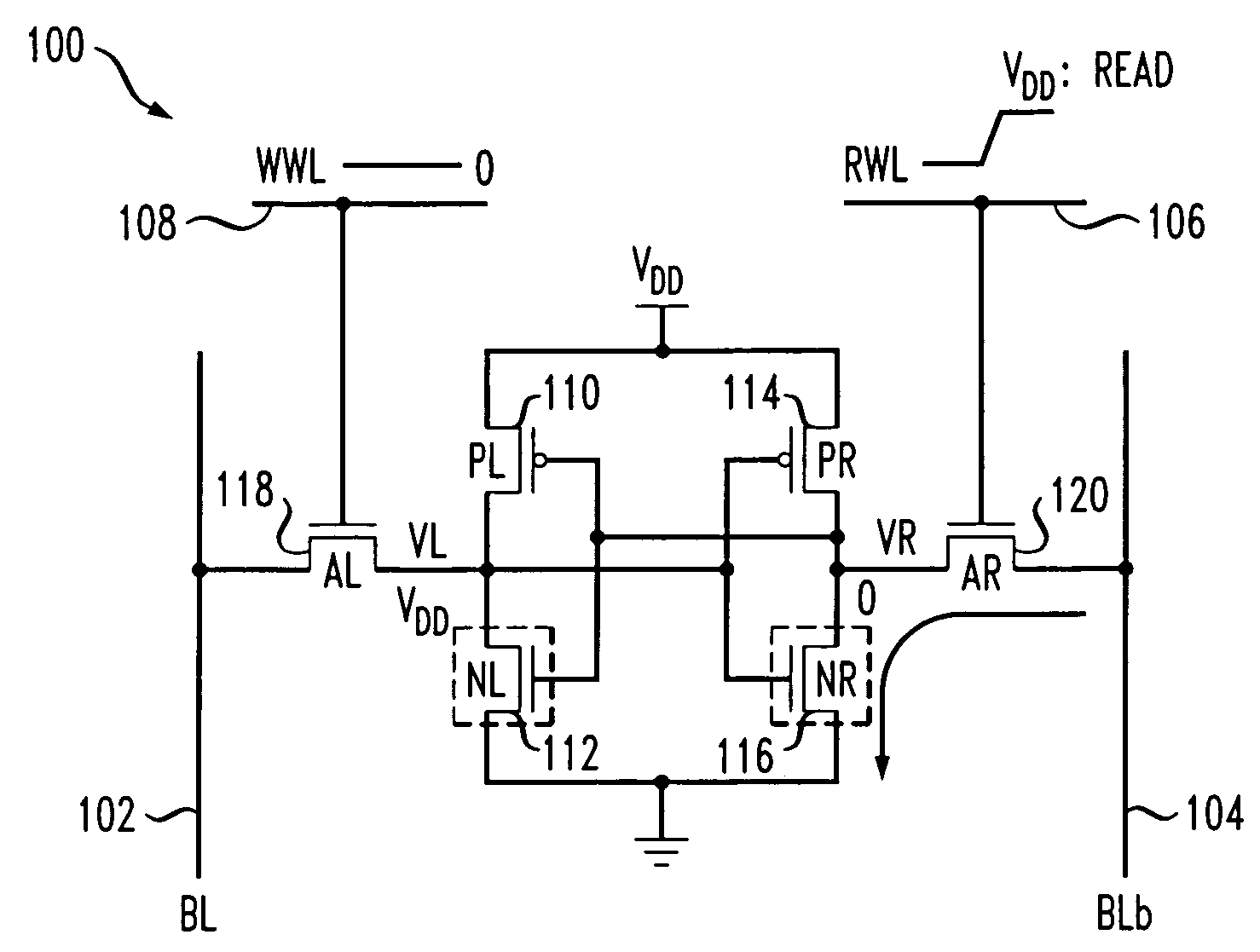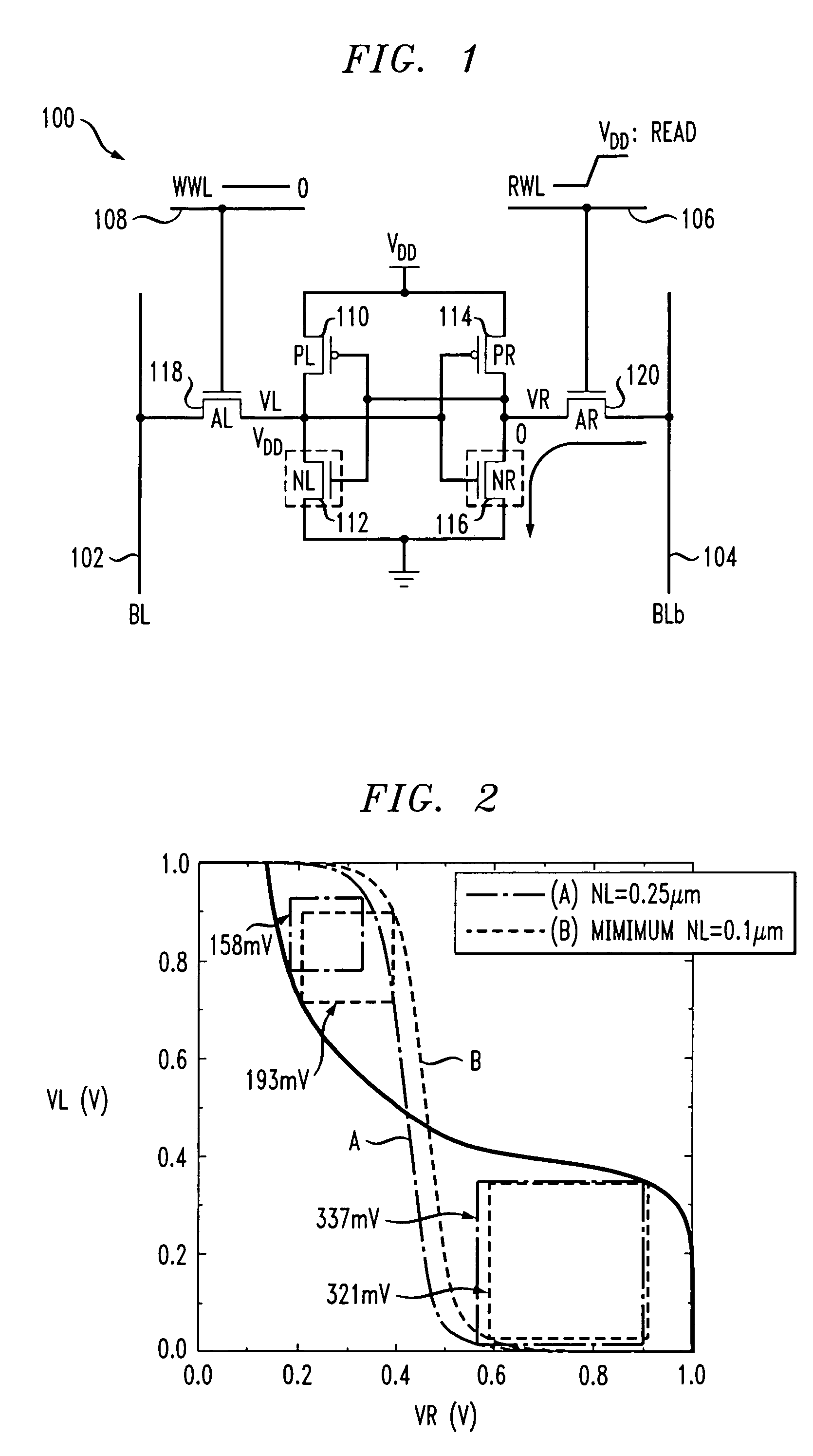Asymmetrical memory cells and memories using the cells
a technology of memory cells and cells, applied in the field of electronic memory circuits, can solve the problems of affecting the stability of conventional sram during read mode, the stability of conventional sram is degraded with technology scaling, and the fluctuation of intra-device random mismatches among adjacent devices, so as to improve the read stability and improve the write performance and margin
- Summary
- Abstract
- Description
- Claims
- Application Information
AI Technical Summary
Benefits of technology
Problems solved by technology
Method used
Image
Examples
Embodiment Construction
[0032]FIG. 1 depicts an asymmetrical SRAM cell not using techniques of the present invention. It will be appreciated that asymmetrical cell 100 can be part of a larger memory circuit having a plurality of bit line structures, such as those formed by true and complementary bit lines 102, 104. Such bit lines are also referred to as “BL” and “BLb.” Further, the circuit also includes a plurality of word line structures, such as those formed by read and write word lines 106, 108 (also referred to as “RWL” and “WWL” respectively) that intersect the plurality of bit line structures to form a plurality of cell locations. The cell 100 is asymmetrical, that is, there is not symmetry between the left and right portions of the cell 100.
[0033]The cell 100 can be selectively coupled to a corresponding one of the bit line structures formed by true and complementary bit lines 102, 104 under control of a corresponding one of the word line structures formed by read and write word lines 106, 108. Each...
PUM
 Login to View More
Login to View More Abstract
Description
Claims
Application Information
 Login to View More
Login to View More - R&D
- Intellectual Property
- Life Sciences
- Materials
- Tech Scout
- Unparalleled Data Quality
- Higher Quality Content
- 60% Fewer Hallucinations
Browse by: Latest US Patents, China's latest patents, Technical Efficacy Thesaurus, Application Domain, Technology Topic, Popular Technical Reports.
© 2025 PatSnap. All rights reserved.Legal|Privacy policy|Modern Slavery Act Transparency Statement|Sitemap|About US| Contact US: help@patsnap.com



